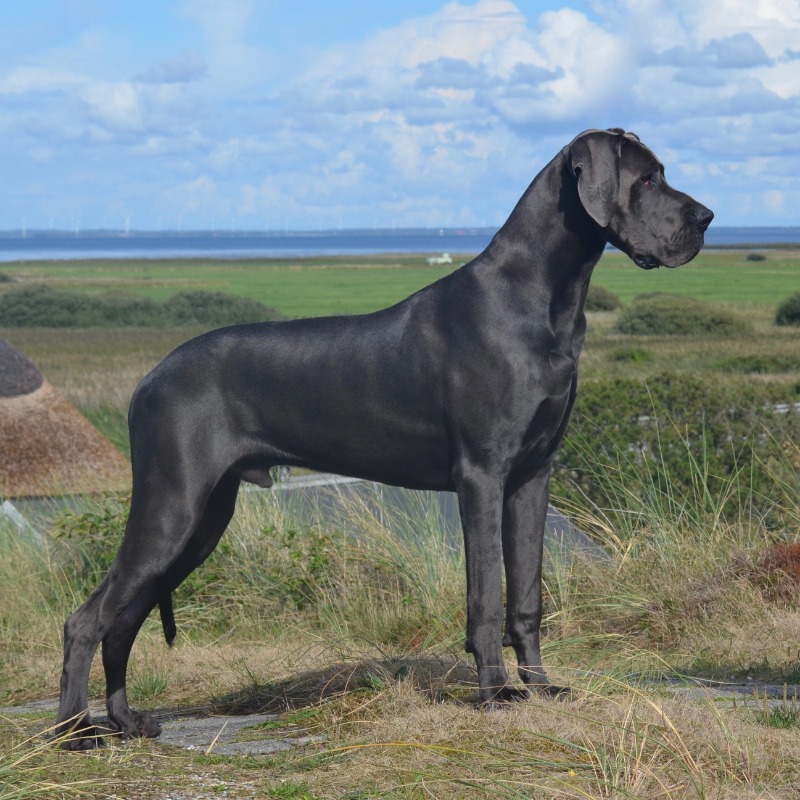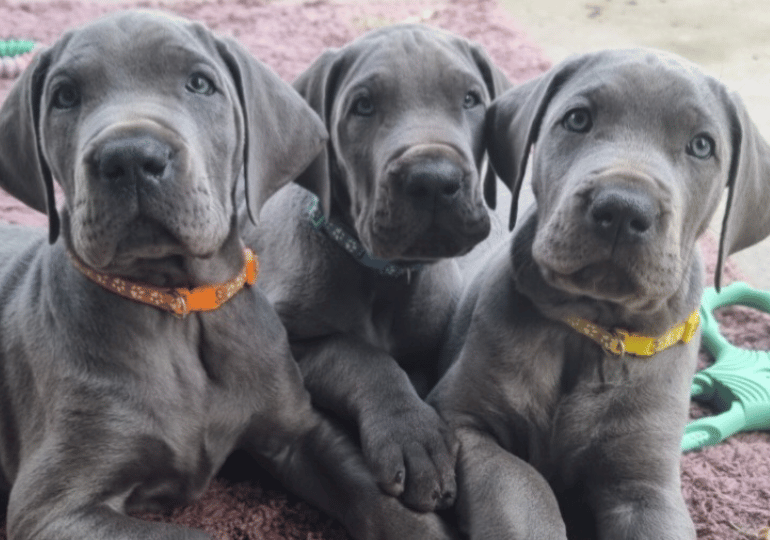Breeds
Great Dane

GROUP 7 - NON SPORTING
Brief History
The Great Dane, also known as the Apollo of Dogs, was developed in Germany in the 1800s. They were bred by German nobility to protect country estates and hunt wild boar. Today, most Great Danes are companion animals and have become popular as family pets.
Average Life Span
When considering a dog, please realise that you are taking it on for its lifetime. The average life span is 7 to 10 years.
Temperament
Great Danes are known to be friendly, outgoing and kindly without nervousness.
General Breed Description
A Great Dane combines pride, strength & elegance wtih its noble appearance and big, strong, well-coupled body. The Great Dane has an alert expression and majestic action, always displaying dignity. They come in a variety of recognized coat colours including blue, black, fawn, brindle, mantle (black with a white collar and trim) and harlequin (white base colour with black or blue patches).
Coat and Care requirements
Short, dense and sleek looking. This coat is fairly low maintenance, and a weekly once over brush and bath when needed is the basic requirement. Nails should be kept short and ears cleaned regularly. Moulting occurs all year round. They are usually a low to moderate shedder.
Size
Minimum Height: Males 76cms (30ins), Females 71cms (28ins).
Minimum Weight: Males 54kgs (120lbs), Females 46kgs (100lbs).
Health
All breeds have individual health issues. When speaking to breeders in is recommended you enquire about breed health and what health testing the breeder does. The Great Dane is generally a healthy breed, however health conditions do occur occasionally. These may include Heart conditions such as Dilated Cardiomyopathy (DCM) and Gastric Dilation (Bloat) &/or Gastric Dilation and Volvulus (GDV). These are some of the health tests that Great Dane breeders should consider: Hip & Elbow scoring to screen for Dysplasia, Neck X-Ray to screen for Wobblers, Echocardiograms to screen for current heart conditions, Eye Screening & Thyroid testing.
Suitability
The Great Dane is a good family dog, however, due to their size they can easily knock over children and the elderly. Training is very important; a Dane is easily trained although some require a little more motivation. They can be a social breed if socialized and trained well, keeping in mind that some may have a high prey drive and like to chase other animals.
In Conclusion
Now you know a little more about this breed. If you have decided this is the dog for you and wish to investigate further, please contact the Breed Club or Dogs Victoria. They will be able to give you information about available puppies and also suggest dog events where you can see the breed and speak to breeders. In this way you will gain a better perspective of the breed and its needs. With any breed of dog, it is important to research and determine suitability for your lifestyle before committing to a puppy which will be a part of your family for many years to come.
Whilst many breeds are recommended for families, it is imperative that when children are with dogs they are supervised at all times. Basic obedience training is a vital part of dog ownership.
Dogs Victoria is about the responsible ownership of all dogs and in particular the preservation of pure breeds.
Link to Dogs Australia Breed Standard: https://dogsaustralia.org.au/breed/detail/82
Breeders






